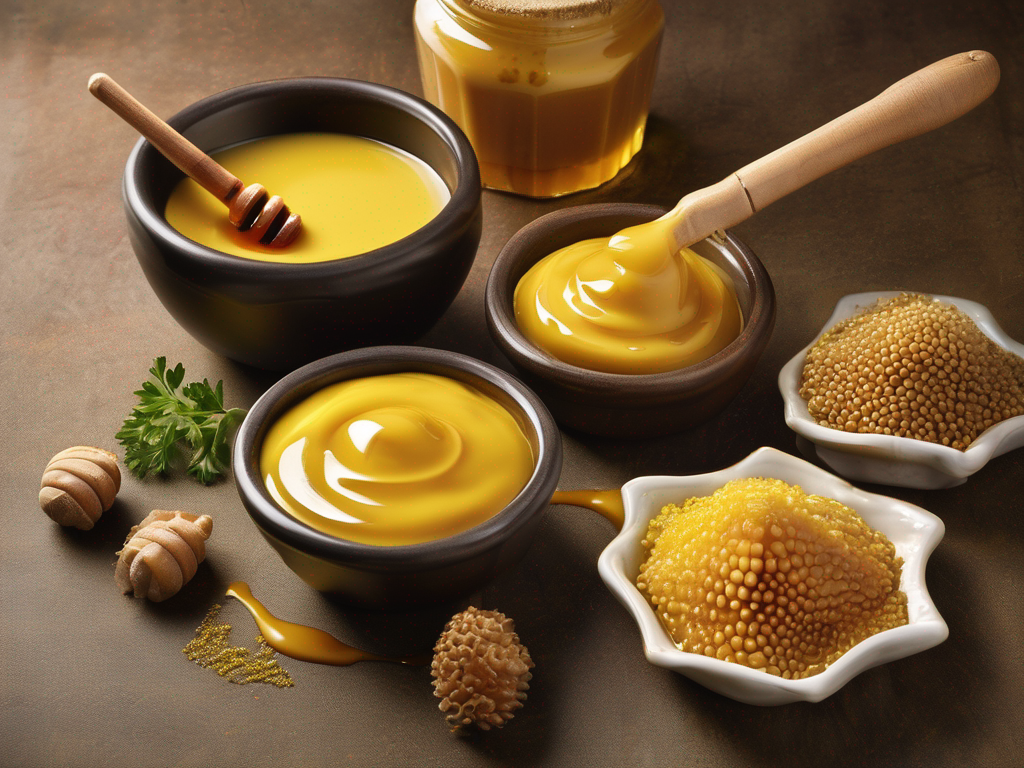
Is Your Honey Mustard Still Good? How to Tell if It's Gone Bad
Get Your Free Food Safety Cheat Sheet
30 most common foods with instant answers. Print it and stick it on your fridge—completely free!
Is Your Honey Mustard Still Good? How to Tell if It's Gone Bad
Honey mustard is a versatile condiment that adds a sweet and tangy flavor to a variety of dishes. Whether you use it for dipping, dressing, or marinating, keeping your honey mustard fresh is essential for both flavor and safety reasons. In this blog post, we will explore how to determine if your honey mustard has gone bad and provide tips on proper storage to prolong its shelf life. (Honey mustard)
Signs of Spoiled Honey Mustard
Honey mustard, like any other food product, can spoil over time. Here are some signs to look out for to determine if your honey mustard has gone bad:
1. Mold Growth:
- Check the surface of the honey mustard for any signs of mold, which can appear as fuzzy patches or discoloration. If you see mold, discard the entire container as consuming moldy food can lead to food poisoning.
2. Unpleasant Odor:
- Spoiled honey mustard may have a sour, rancid, or off-putting smell. If the odor is unpleasant or different from the usual sweet and tangy aroma, it's best to throw it away.
3. Change in Texture:
- If the texture of the honey mustard has become lumpy, slimy, or separated, it indicates spoilage. Fresh honey mustard should have a smooth and creamy consistency.
4. Off Taste:
- Taste a small amount of the honey mustard to check for any unusual or off flavors. Spoiled honey mustard may taste bitter, sour, or generally unpleasant.
5. Expired Date:
- Check the expiration date on the container. If the honey mustard has passed its expiry date, it's safer to err on the side of caution and discard it.
Proper Storage of Honey Mustard
To ensure your honey mustard stays fresh and safe to consume, follow these storage tips:
1. Refrigeration:
- Once opened, store honey mustard in the refrigerator to prolong its shelf life. The cool temperature helps slow down bacterial growth and maintain the quality of the condiment.
2. Air-Tight Container:
- Transfer honey mustard to an airtight container or a jar with a tight-fitting lid to prevent air exposure, which can lead to spoilage.
3. Avoid Cross-Contamination:
- Use clean utensils when scooping out honey mustard to prevent introducing bacteria into the condiment. Avoid double-dipping to maintain freshness.
4. Keep Away from Heat and Light:
- Store honey mustard away from direct sunlight and heat sources, as exposure to light and high temperatures can degrade the quality of the condiment.
5. Check for Signs of Spoilage Regularly:
- Periodically inspect the honey mustard for any signs of mold, off odors, or changes in texture. If you notice any of these indicators, discard the product immediately.
Conclusion
In conclusion, keeping your honey mustard fresh and safe to consume involves proper storage and regular inspection for signs of spoilage. By following the tips outlined in this blog post, you can enjoy your honey mustard for longer periods while ensuring its quality and safety. Remember, when in doubt, it's best to throw it out rather than risk consuming spoiled honey mustard. Enjoy the sweet and tangy flavors of your favorite condiment with confidence knowing that it's still good to use.
For more information on honey mustard, check out our [honey mustard](/food/honey mustard) guide. (Honey mustard)
Authoritative Food Safety References
These agencies and university labs inform every tip and health precaution we publish.
USDA FoodKeeper – Cold Storage Guidelines
Official refrigerator, freezer, and pantry timelines maintained by the U.S. Department of Agriculture.
Visit USDA FoodKeeperFDA Produce Safety Rule & Grower Guidance
Field-to-fridge handling practices that prevent contamination of fruits, vegetables, and leafy greens.
Visit FDA Produce SafetyCDC Foodborne Illness Prevention Hub
Surveillance-backed guidance on pathogens, symptoms, and steps to reduce foodborne illness risk.
Visit CDC Food SafetyUC Davis Postharvest Technology Center
University research detailing optimal storage atmospheres for produce after harvest.
Visit UC Davis PostharvestPenn State Extension – Home Food Preservation & Safety
Peer-reviewed extension bulletins on safe canning, chilling, and reheating practices.
Visit Penn State ExtensionGet Your Free Food Safety Cheat Sheet
30 most common foods with instant answers. Print it and stick it on your fridge—completely free! Want more? Upgrade to the complete guide with 70+ foods.
Scan your food directly and get instant safety info using our AI-powered camera feature.